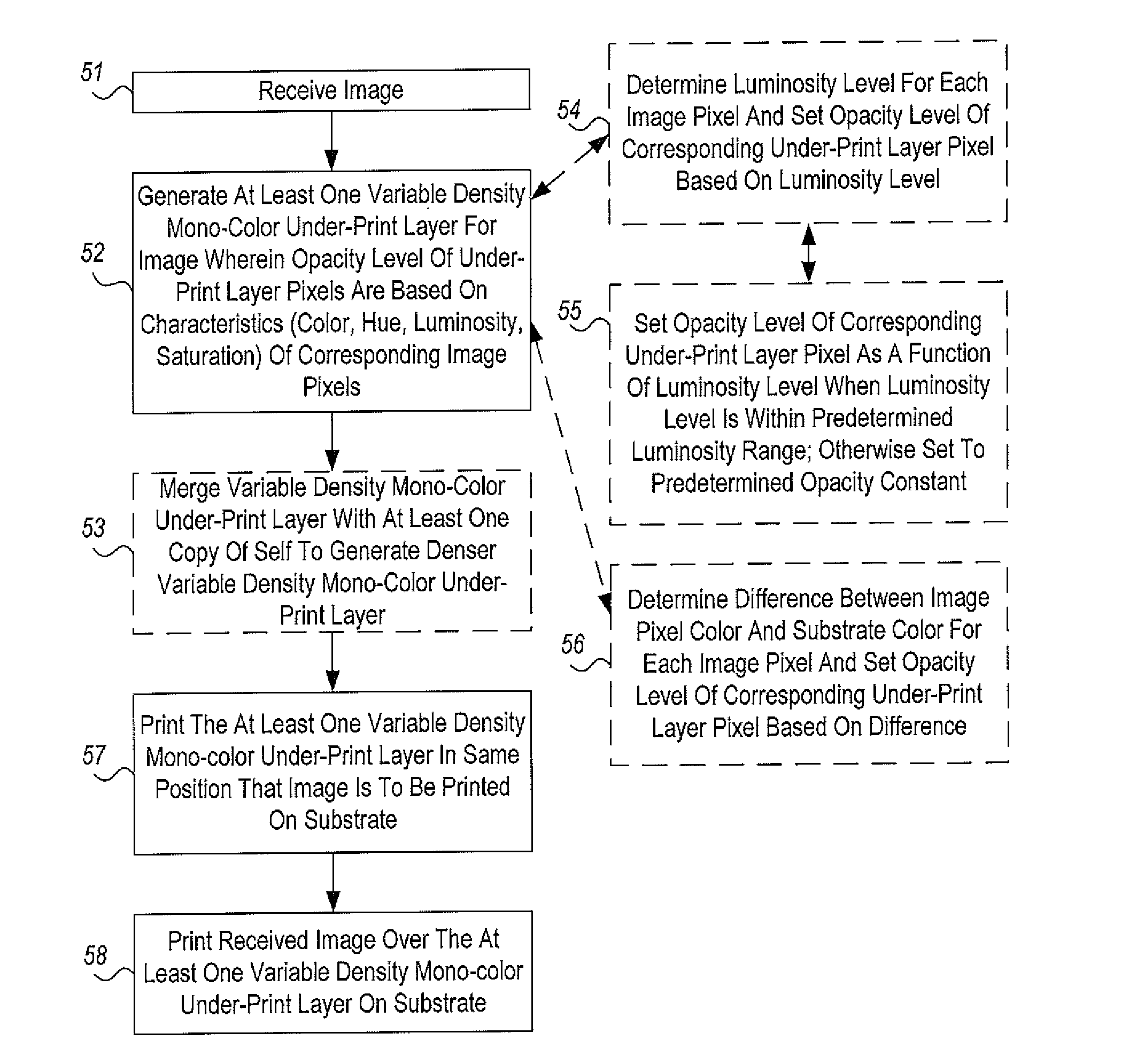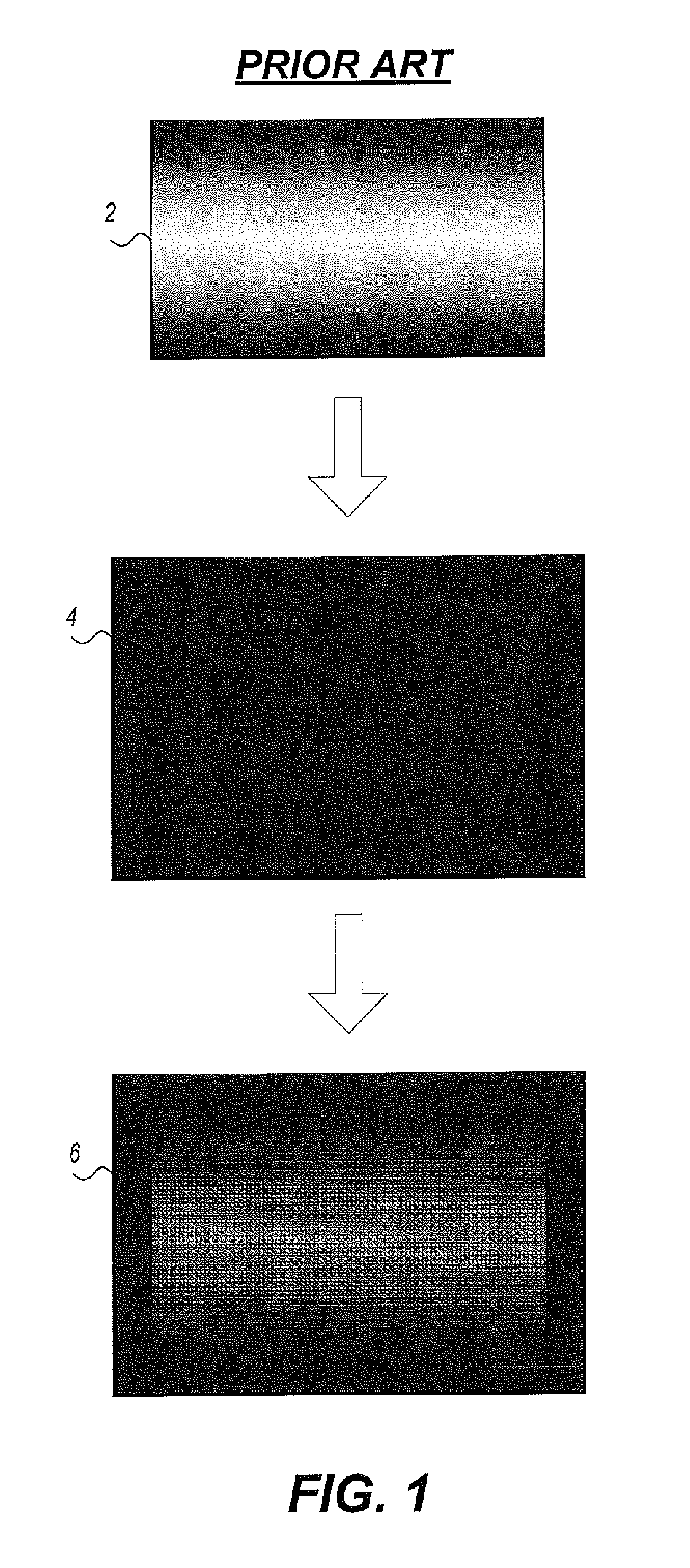System and method for printing using variable-density white ink under-printed layer
- Summary
- Abstract
- Description
- Claims
- Application Information
AI Technical Summary
Benefits of technology
Problems solved by technology
Method used
Image
Examples
Embodiment Construction
[0022]For a better understanding of the advantages conferred by various embodiments of the present invention described herein, an example illustration of the challenges of printing images is first discussed. FIG. 1 illustrates an example image 2 in the form of a simple rectangle with varying degrees of color and / or luminosity. Although shown in grayscale due to the black-and-white drawing requirements of the Patent Office, it is to be understood that the image 2 may be multi-colored and that each grayscale level in the image 2 may represent a different color.
[0023]In a digital image, the way a color is represented depends on the color model used by the particular system. For example, the RGB (red, green, blue) color model is a simple additive model, wherein the intensity of each component (red, green and blue) of a color is represented on a scale of 0 to 255, where 255 represents full intensity. The individual color values are then added to give the overall color. Black is represent...
PUM
 Login to View More
Login to View More Abstract
Description
Claims
Application Information
 Login to View More
Login to View More - R&D
- Intellectual Property
- Life Sciences
- Materials
- Tech Scout
- Unparalleled Data Quality
- Higher Quality Content
- 60% Fewer Hallucinations
Browse by: Latest US Patents, China's latest patents, Technical Efficacy Thesaurus, Application Domain, Technology Topic, Popular Technical Reports.
© 2025 PatSnap. All rights reserved.Legal|Privacy policy|Modern Slavery Act Transparency Statement|Sitemap|About US| Contact US: help@patsnap.com



